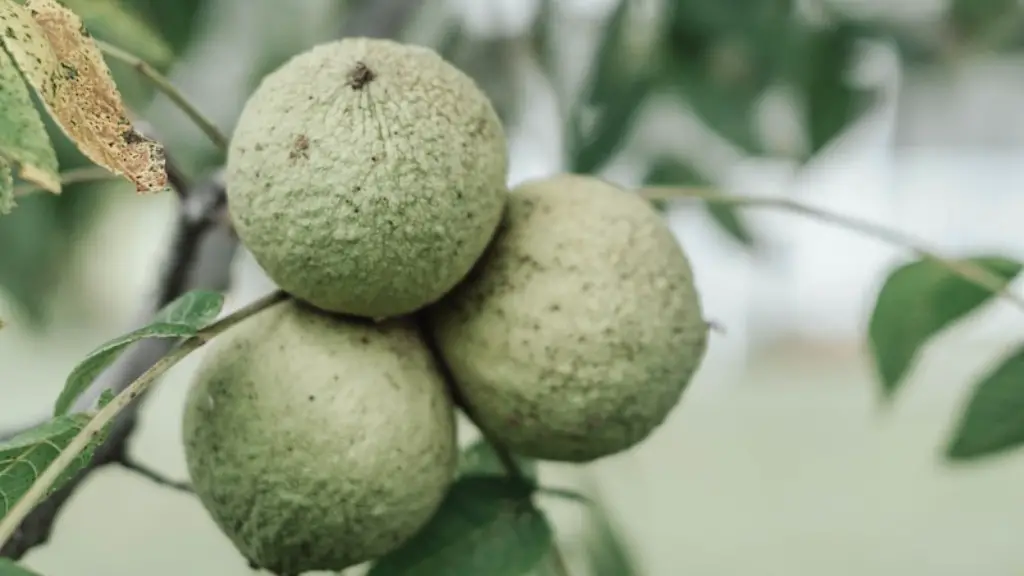Introduction
Palm trees are the most instantly recognizable symbol of the tropics, beauty and strength. These trees are aesthetically pleasing, often creating a tranquil atmosphere, while providing a great deal of beauty and texture to a garden. Although traditional tree-pruning techniques are easy to implement, what if the tree in question is a palm? Can you trim a palm tree or is that not recommended?
Background Information
Palms are large family of plants that mostly grows in tropical areas. They are among the most popular plants grouped together with cycads and are classified in the family “Arecaceae”. Palms are important for a range of uses, from providing dates and coconuts to being commonly used as landscaping plants. One of the distinctive features of palms is their highly fibrous trunks that often reach great heights and their feather-like leaves that spread out from their crown.
Pruning Requirements
Palms can benefit from regular pruning and shaping, but just like any other tree, the care needs to be taken with palm pruning to ensure no damages occur to the trunk or leaves. Over-pruning can produce a wide array of problems. These include spotting, yellowing of leaves, accelerated leaf drop and significant reduction of the tree’s growth rate. Additionally, pruning palms incorrectly can expose them to disease, sunburn and other forms of damage.
Equipment for Pruning a Palm Tree
If you decide to trim a palm tree, it’s important to keep safety in mind. To do this, you need to be sure to have the right equipment. A sharp bypass pruner is essential. These allow you to make precise cuts without damaging the tree’s fibers. In addition, you will need a ladder, garden gloves and a pair of safety glasses.
Examples of Pruning a Palm Tree
When it comes to trimming a palm tree, it’s important to keep in mind the health requirements of the tree. For example, palm fronds that are dry or dead should be pruned in order to maintain a healthy balance. You should also thin out crowded fronds, preferably in a V-shape to help with airflow and sunlight exposure. If your palm tree is very tall, the lower fronds should be removed to allow the top fronds to flourish and receive the nourishment they need.
When to Prune a Palm Tree
When deciding to prune a palm tree, it’s important to be mindful of the time of year. Pruning should be done on a seasonal basis, ideally from late fall to early spring. This is so you avoid the hottest times of the year and the time when the tree’s reserves are low. Additionally, pruning should be conducted during a ‘dry window’, when the leaves are exposed to minimal moisture.
Experts’ Perspectives
Many experts recommend that you seek out assistance before attempting to prune a palm tree. This is especially true if it is a tall one and you need to use a ladder. Consulting a tree arborist is a great way to understand the needs of the specific species before performing any necessary pruning. These professional arborists are highly knowledgeable and can provide important guidance on how to best care for your palms.
Pros and Cons of Pruning a Palm Tree
One of the major pros of pruning a palm tree is that it can help to ensure that it remains healthy. Pruning can help to promote better air circulation, sunlight exposure and more balanced growth. On the other hand, there are some cons associated with pruning palm trees. Over-trimming can cause significant damage to the tree and can even lead to death. Therefore, it’s important to be mindful of the season and the type of pruning you decide to do.
Insights and Analysis
From an aesthetic perspective, pruning a palm tree can help it to look more balanced and more structured, making it an attractive addition to any garden. However, it is essential to be mindful of the rules and regulations when it comes to pruning. Before attempting any type of pruning, you should learn the specifics of the tree and its needs. If you require assistance, it’s recommended to consult with a professional arborist to ensure that you are meeting the needs of the tree and not damaging it in the process. In general, pruning should be done with caution and only when it’s absolutely necessary.
Alternatives to Pruning
In addition to pruning, palm trees can benefit from other forms of care. Fertilizing is one way to ensure the health of the tree. Applying a balanced fertilizer that contains macronutrients such as nitrogen, phosphorus and potassium can help to promote better growth. Additionally, proper watering is essential. This includes not only providing the tree with enough water but also ensuring that there is good drainage. Lastly, establishing a pest management plan is important for a healthy palm tree.
Precautions for Trimming a Palm Tree
When it comes to trimming a palm tree, it’s important to use protective gear and take the proper precautions. It’s essential to wear protective equipment such as glasses, gloves and clothing that covers the body. You should also set up a sturdy ladder that is well grounded and avoid over-reaching or exceeding your limit. Lastly, make sure to use a sharp bypass pruner to ensure precision and make sure to keep both hands on the ladder at all times.


